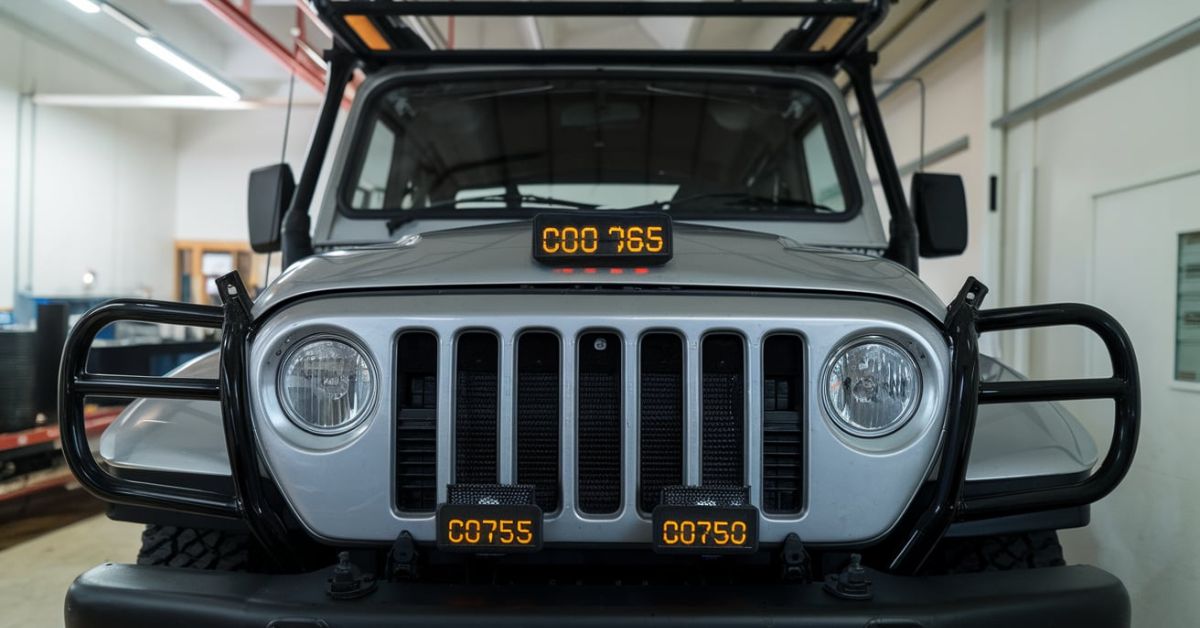Understanding C0765 and C0750 Code: A Comprehensive Guide
When it comes to diagnosing issues in vehicles, trouble codes play a crucial role. Among these codes, the C0765 and C0750 codes are essential indicators of specific problems within the vehicle’s systems, especially related to sensors. This article aims to provide a thorough understanding of these codes, their implications, causes, and solutions.
Table of Contents
ToggleWhat Are C0765 and C0750 Codes?
The C0765 and C0750 codes are diagnostic trouble codes (DTCs) related to vehicle control systems, particularly those involved in sensor functionality. When a vehicle’s onboard computer detects a problem with certain components or systems, it logs a trouble code to assist mechanics and technicians in identifying and resolving the issue.
C0750 Code Explained
The C0750 code signifies an issue with the vehicle’s sensor. More specifically, it indicates that the RCDLR (Remote Control Door Lock Receiver) has detected a malfunction in the system. This can occur when one or more sensors fail to enter rolling mode or fail to transmit data altogether.
C0765 Code Explained
On the other hand, the C0765 code also indicates a malfunction but pertains to a different aspect of the vehicle’s functionality. This code signals that one or more sensors in the system have not transitioned to rolling mode, which is essential for proper vehicle operation.
How C0750 and C0765 Codes Are Set
Understanding how these codes are triggered can help vehicle owners and mechanics pinpoint the issues quickly. The RCDLR monitors various sensors and signals from different parts of the vehicle. If these sensors fail to perform their functions correctly, the RCDLR sets off the DTCs, alerting the driver that there’s a problem.
Possible Triggers for C0750 and C0765 Codes
- Faulty Sensors: The most common reason for these codes is a malfunctioning sensor. If the sensor does not work correctly, it cannot provide the necessary data to the RCDLR.
- Wiring Issues: Damaged or corroded wiring can interrupt the communication between the sensors and the RCDLR. This can lead to incorrect readings and trigger the codes.
- Software Issues: Sometimes, the vehicle’s software may not be updated or may contain bugs that cause the RCDLR to misinterpret sensor data, leading to the setting of these codes.
- Environmental Factors: Extreme temperatures, moisture, and dirt can affect the performance of sensors, resulting in malfunction and code triggers.
Symptoms of C0750 and C0765 Codes
Recognizing the symptoms of these trouble codes can help drivers take action before issues escalate. Some common symptoms include:
- Malfunction Indicator Light (MIL): The most noticeable sign is the illumination of the check engine light or another warning light on the dashboard.
- Vehicle Performance Issues: Drivers may experience problems with the vehicle’s performance, such as reduced acceleration, erratic idling, or stalling.
- Inability to Lock/Unlock Doors: Since these codes relate to the RCDLR, issues with door locks may arise.
- Unexpected Alerts: Drivers might receive alerts or warnings about various vehicle functions that may not be accurate.
Diagnosing C0750 and C0765 Codes
Diagnosing the exact cause of these trouble codes requires a systematic approach. Here’s a breakdown of the steps involved:
Step 1: Scan for Codes
The first step in diagnosing these codes is to use an OBD-II scanner to read the trouble codes stored in the vehicle’s computer. This will confirm the presence of C0750 and C0765 codes and may reveal additional codes that can provide more context.
Step 2: Inspect the Sensors
Once the codes are confirmed, inspect the sensors related to the RCDLR. Look for signs of damage, corrosion, or disconnection. Ensure that all connectors are securely attached and that there are no visible issues with the wiring.
Step 3: Check the Wiring
Perform a thorough inspection of the wiring associated with the sensors. Look for frays, breaks, or corrosion that could be causing communication failures between the sensors and the RCDLR.
Step 4: Test the Sensors
Use a multimeter to test the functionality of the sensors. This will help determine whether they are working correctly or need to be replaced.
Step 5: Update Software
If all sensors and wiring are in good condition, consider checking for software updates for the vehicle’s control modules. Sometimes, a simple update can resolve issues related to miscommunication between components.
Repairing C0750 and C0765 Codes
Once the diagnosis is complete, the next step is to address the issues causing the trouble codes. Here are some common repair strategies:
- Replace Faulty Sensors: If the diagnostics indicate that a specific sensor is malfunctioning, replacing it is often the best course of action.
- Repair or Replace Wiring: If damaged wiring is found, repairing or replacing it will ensure proper communication between the sensors and the RCDLR.
- Update Vehicle Software: If the software is outdated or contains bugs, updating it may resolve issues related to the codes.
- Clear Codes: After repairs are made, clear the codes from the vehicle’s computer using the OBD-II scanner. This resets the system and allows for monitoring of the repairs’ effectiveness.
- Test Drive: Finally, conduct a test drive to ensure that the repairs were successful and that the trouble codes do not return.
Preventing Future C0750 and C0765 Codes
To avoid running into issues with C0750 and C0765 codes in the future, consider the following preventive measures:
- Regular Maintenance: Ensure regular maintenance checks are performed on the vehicle, focusing on sensor functionality and wiring integrity.
- Protective Covers: Use protective covers for sensors to shield them from dirt and moisture, especially in extreme weather conditions.
- Software Updates: Regularly check for and apply any software updates for the vehicle’s control systems to minimize bugs and communication issues.
FAQs About C0750 and C0765 Codes
1. What does the C0750 code mean?
The C0750 code indicates a malfunction with the Remote Control Door Lock Receiver (RCDLR), particularly when one or more sensors fail to enter rolling mode.
2. What does the C0765 code indicate?
The C0765 code signifies that one or more sensors are not transmitting data properly, which can affect the vehicle’s overall functionality.
3. How can I fix C0750 and C0765 codes?
To fix these codes, diagnose the sensors and wiring, replace any faulty components, update vehicle software, and clear the codes using an OBD-II scanner.
4. Can I drive with C0750 and C0765 codes?
While it may be possible to drive with these codes, it is not advisable as they indicate underlying issues that can affect the vehicle’s performance and safety.
5. How do I prevent these codes from reappearing?
Regular maintenance, protecting sensors from environmental factors, and ensuring software is up-to-date can help prevent these codes from recurring.
Conclusion
The C0765 and C0750 codes are critical indicators of vehicle system issues that can significantly impact performance. Understanding their implications and symptoms can help vehicle owners and mechanics take timely action. By following the diagnostic and repair steps outlined in this guide, you can address these trouble codes effectively, ensuring your vehicle operates smoothly.
Maintaining awareness of sensor functionality and vehicle software will go a long way in preventing future occurrences of these codes. Remember, regular maintenance is key to a healthy vehicle, and addressing issues early can save you time and money in the long run.






